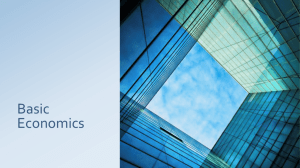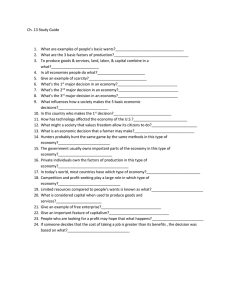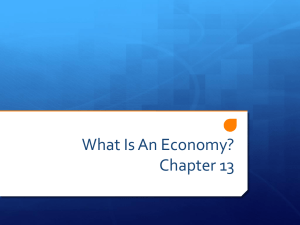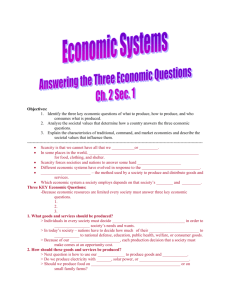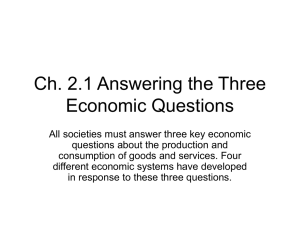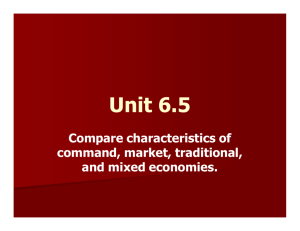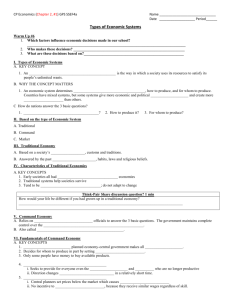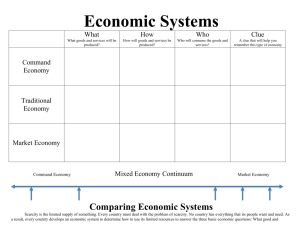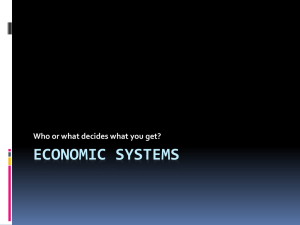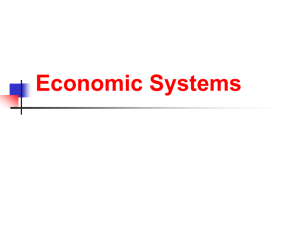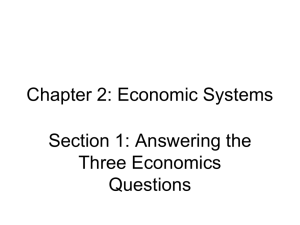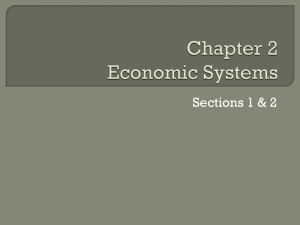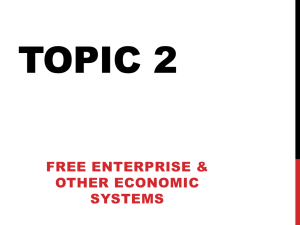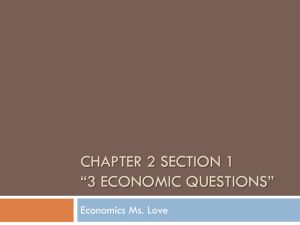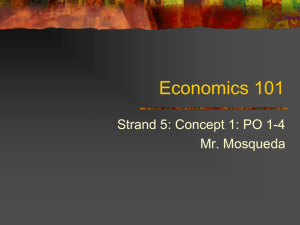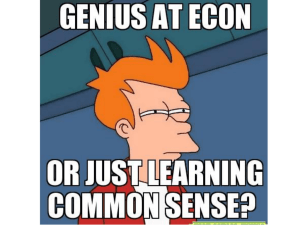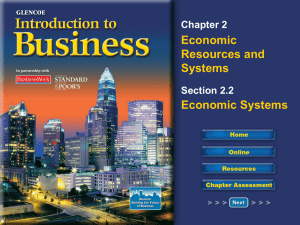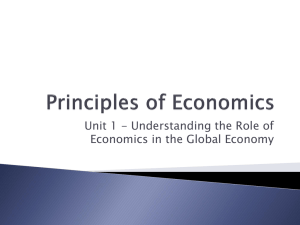Economic Systems - Columbian High School
advertisement
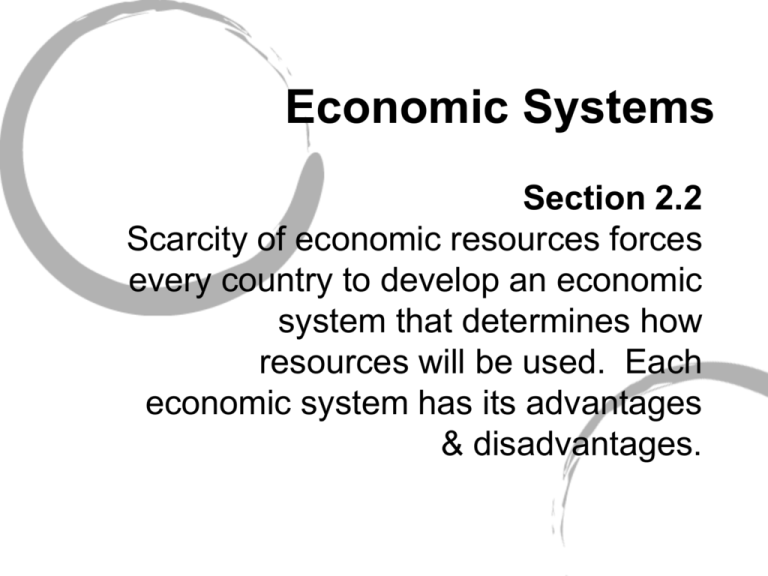
Economic Systems Section 2.2 Scarcity of economic resources forces every country to develop an economic system that determines how resources will be used. Each economic system has its advantages & disadvantages. Key Terms Economics, economic systems, market economy, price, supply, demand, equilibrium price, command economy & mixed economy Basic Economic Questions Economics is the study of how individuals and groups of individuals strive to satisfy their needs and wants by making choices. All societies have to make choices to deal with some form of scarcity. No society has enough productive resources available to produce everything people want and need. Societies make economic decisions about how to meet the needs of people by answering three basic economic questions: 1- What should be produced? Deciding to use a resource for one purpose means giving up the opportunity to use it for something else. This is called an opportunity cost. 2- How should it be produced? The methods and labor used as well as the quality of items produced are important factors. In a country with many workers but few capital resources, it is likely that little equipment and larger amounts of labor are used in producing the goods. 3- Who should share in what is produced? In most societies, people can have as many goods and services as they can afford to buy. The amount of income people receive determines how many goods and services they can have. Different Types of Economies Economic systems are the methods societies use to distribute resources. Different economic systems answer the three basic economic questions in different ways. Two basic types of economic systems are market economy and command economy. Market Economies A market economy is an economic system in which economic decisions are made in the marketplace. The marketplace is where buyers and sellers meet to exchange goods and services, usually for money. A market economy can also be called a private enterprise system, the free enterprise system, or capitalism. In a market economy, resources are privately owned. Citizens can own their own homes, land, and businesses. Business owners decide how their businesses will be run, what to produce and sell, and how much to charge. The government works to promote free trade and prevent unfair trade practices. Consumers choose their occupations and decide where to live, where to shop, and what to buy. People who have labor skills that are in demand earn higher incomes than those who do not. There is an uneven distribution of income. In a market economy, individuals are responsible for being informed a making careful decisions. Price, Supply & Demand There is a relationship between price, supply, and demand. The price for an item is determined through the interactions of supply and demand. Price is the amount of money given or asked for when goods and services are bought or sold. Supply is the amount for goods and services that producers will provide at various prices. Producers want a price for their goods and services that will cover their costs and result in a profit. Demand is that amount or quantity of goods and services that consumers are willing to buy at various prices. The higher the price, the less consumers will buy. The lower the price, the more consumers will buy. Supply and demand interact with each other, as shown below. The equilibrium price is the point at which the quantity demanded and the quantity supplied meet. Competition and Profit In a market economy, competition is observed. Competition between similar businesses is one of the basic characteristics of a free enterprise system. It encourages businesses to produce better products at lower prices to attract more customers. Entrepreneurs take risks to make profits. Profit motive is the desire to make a profit, and profit is the reward for taking a risk and starting a business. Command Economies A command economy is an economic system in which a central authority make the key economic decisions. The government dictates what will be produced, how it will be produced, and who will get the goods. The government owns and controls all the resources and businesses. There is little choice of what to buy. Goods that are not considered necessities are often unavailable. Prices are controlled by the state. There is no incentive to produce a better product since there is no competition. Highly skilled workers may earn the same wages as low-skilled workers. In a moderate command economy, also called socialism, there is some form of private enterprise. The state owns major resources, such as airlines and steel companies and makes the key economic decisions. Individuals own some businesses. Mixed Economies In reality, few nations have a pure market economy or a pure command economy. Most nations have a mixed economy in which private ownership of property and individual decision making are combined with government intervention and regulations. A mixed economy is an economy that contains both private and public enterprises. A mixed economy combines elements of capitalism and socialism. In the United States, for example, the government provides things such as defense, education, and aid to those with lower incomes. These are characteristics of a command economy. Yet the United States is primarily a market economy. That means the market makes more of the decisions regarding the allocation of resources than the government. This is also true of Japan. France, Germany and Sweeden are also classified as market economies. However, many of their major industries, such as steel and health care, are owned by the government. In other words, their governments have more control of the resources that U.S. and Japanese governments. These economies are considered more socialistic because of greater governmental control of resources. Review Key Concepts 1- How does a market system decide what will be produced? 2- In a market system, what determines how many goods and services an individual can buy? 3- Some nations can produce more goods with fewer workers than other countries that have more workers. How can that be true?
